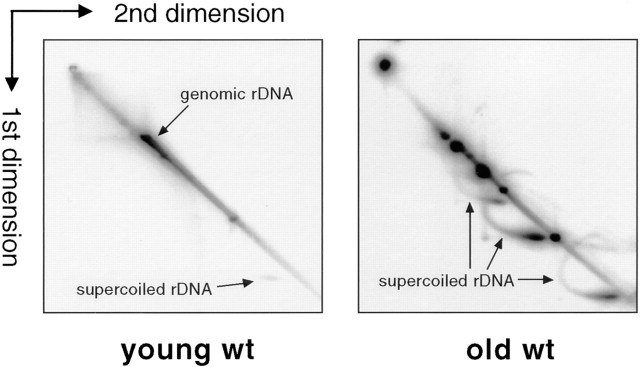Extrachromosomal rDNA Circles— A Cause of Aging in Yeast
https://www.cell.com/fulltext/S0092-8674(00)80493-6 David A. Sinclair & Leonard Guarente
Department of Biology
Massachusetts Institute of Technology
Cambridge, Massachusetts 02139
The paper examines the impact of ERCs on the aging of yeast cells. Yeast is a simple organism commonly used to study biological processes. The researchers observed that the accumulation of ERCs is linked to a decrease in lifespan.
Ribosomal DNA (rDNA) is a crucial genetic material that produces ribosomes, which are the factories that synthesize proteins. While rDNA copies are typically found on chromosomes, some can become detached from the chromosomes and form circular molecules that replicate independently of the chromosomal DNA — these are known as Extrachromosomal rDNA Circles (ERCs).
The researchers found that the accumulation of ERCs in yeast cells correlated with a decrease in the cells' ability to divide — a sign of aging. They also found that removing ERCs from old cells rejuvenated them, restoring their ability to divide and extending their lifespan.

In young yeast cells, the Sir2 enzyme represses the mating-type information (i.e., genes associated with male and female traits). As yeast cells age and accumulate ERCs, the activity of the Sir2 enzyme decreases, resulting in less silencing of these genes. The loss of silencing leads to the activation of both male and female genes, causing infertility, which is a hallmark of yeast aging. These findings suggest that ERCs contribute to the aging process in yeast cells.